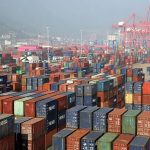Inflation, we only have ourselves to blame!
The Fed last week became concerned enough about inflation to finally make a move to prepare to contain it. (Eventually in 2023) They still claim it won’t last and they might be right, but I believe inflation will probably be around for some time, and we really only have ourselves to blame for a large portion of it.
So how does inflation impact commodities including sugar?
Well, as we have seen from the comments of the investment banks that believe we are in a “super cycle”, the narrative attracts investors and speculators. When the Fed finally became worried, we saw the knee jerk reaction from some of those speculators as they saw that inflation would not be allowed to run unmolested. The Fed just announced a future change, (they actually did nothing other than that), and yet the markets (including sugar) reacted like interest rates had suddenly been raised or that the QE program had been halted. The underlying fundamental dynamics of inflation had not been changed, but many speculators ran to the proverbial exit door.
So, what do I mean when I say we are to blame?
Well, it is actually government policies that contribute to a large part of the price rises we experience. In sugar, we have Brazil’s pricing of gasoline that shifts and swings sugar production to ethanol or ethanol to sugar. But, in Brazil’s case, it is also the government’s ineptitude with regards to balancing the budget and controlling the spread of COVID that has weakened the Real, and pushed mills to concentrate on sugar production and export. So actually in this case, it is actually sugar deflation.
But it is not only Brazil that distorts sugar prices. We can also examine what the Indian government has done in its quest to remain in power. In almost every election cycle they raise the price of sugarcane in order to keep the cane farmers voting for the existing government. Yes, we know it has been several years since we last saw a price rise, recently the export subsidy has helped the mills enough to cover their arrears. Especially this year, it was a veritable windfall. In this way, they create inflation internally but cause deflation in the international market.
India, however, is not alone in boosting internal sugar prices. The list of countries that protect their internal markets in order to help their own sugar industries is long and varied. The United States, EU, Russia, China, and Mexico are but a few of the countries that create import barriers to keep internal prices elevated. Now many of these countries are making things worse for the consumer, by taxing sugar drinks, as well as some foods.
What if these barriers were removed? How many sugar producers would survive? Where would the price fall?
Countries don’t remove these barriers because farmers have an outsized political clout and then these countries might then have to rely on production risks from other countries.
But sugar is only one commodity that is continually interfered with. Now we have vegetable oil that is being given a subsidy of $1.0 a gallon in the US in order to boost biodiesel production. This boosted soybean oil to its highest level ever, but then the government began to get cold feet and began talking about making a change and the market suddenly lost 25%. What will governments do as they push for a global electrification of the cars and boost the electrical grid in order to accommodate renewable energy? Only 10% of the global economy is electrified and already the five main metals used in batteries and electrical grids have risen 139% this year.
Meanwhile, the United States is still maintaining trade tariffs on China and some other countries, and yet steel prices have exploded (One of the reasons we began trade tariffs.) These tariffs are not hurting China, they are just raising consumer prices internally.
We could also point the finger at those countries that have mishandled COVID. Many country leaders used the excuse that they needed to keep their economies running, and didn’t contain, test and vaccinate in a rigorous manner. Ironically, those countries continue to struggle economically and will continue to pay a heavy price in human lives as well. Those that managed to appear to make it through the COVID experience relatively well, might be flattering to deceive. Many now are not pushing vaccination in order to reach herd immunity. (Talking about many US states now), If the percentage of those vaccinated doesn’t reach 80%, they will eventually see a resurgence in new variants (currently Delta, but there will be more eventually). This goes for those countries that will need financial aid in order to vaccinate their populace. A return of COVID, regionally and globally will continue to distort logistics and trade flow and we will continue to see elevated transport costs and in some cases increased cost of merchandise or food.
The inefficient use of resources in the name of national policy or politics, will continue to cause price distortions and the end result of this will be a rise in inflation and that will most likely lead to a rise in interest rates. That could eventually put a huge burden on debt maintenance and could lead to a financial crisis. Who will we blame? We should look at ourselves.
Click here to read Episode 1
Click here to read Episode 2
Click here to read Episode 3
Click here to read Episode 4
Mr. Michael McDougall is Managing Director at Paragon Global Markets, LLC, New York, USA. He has been active in commodity futures for 35 years.











